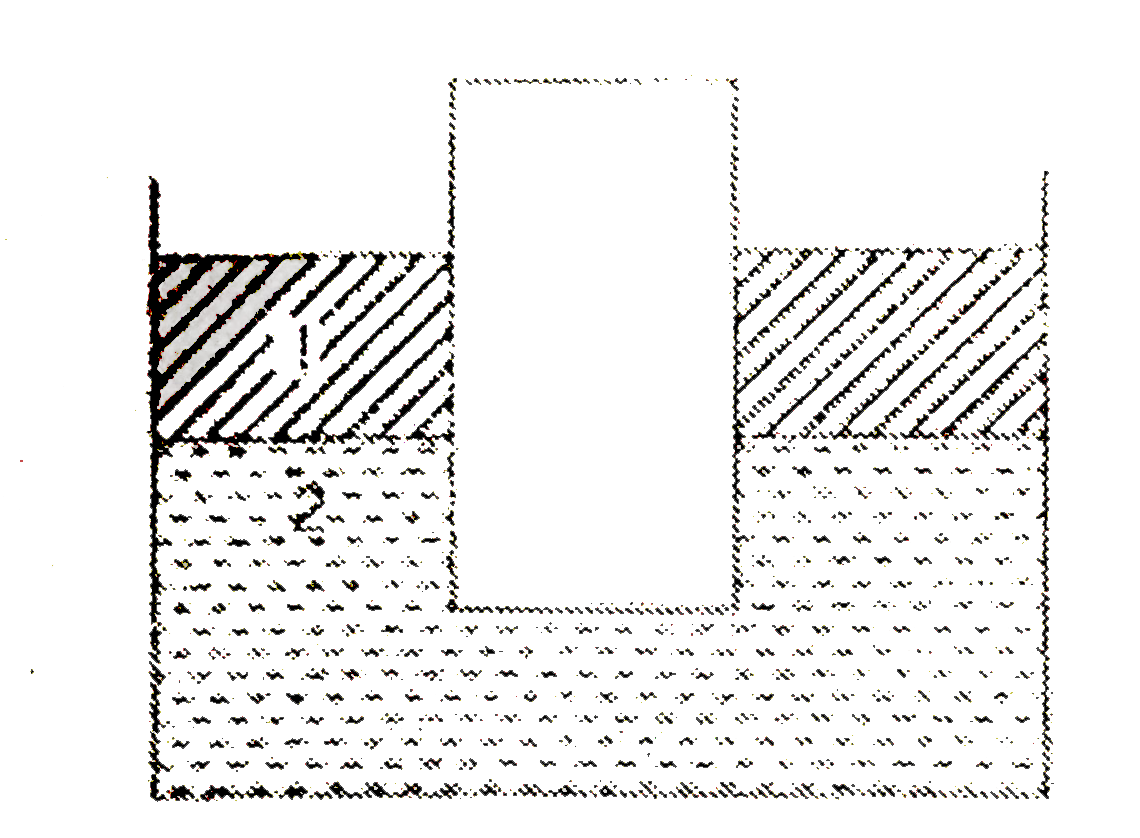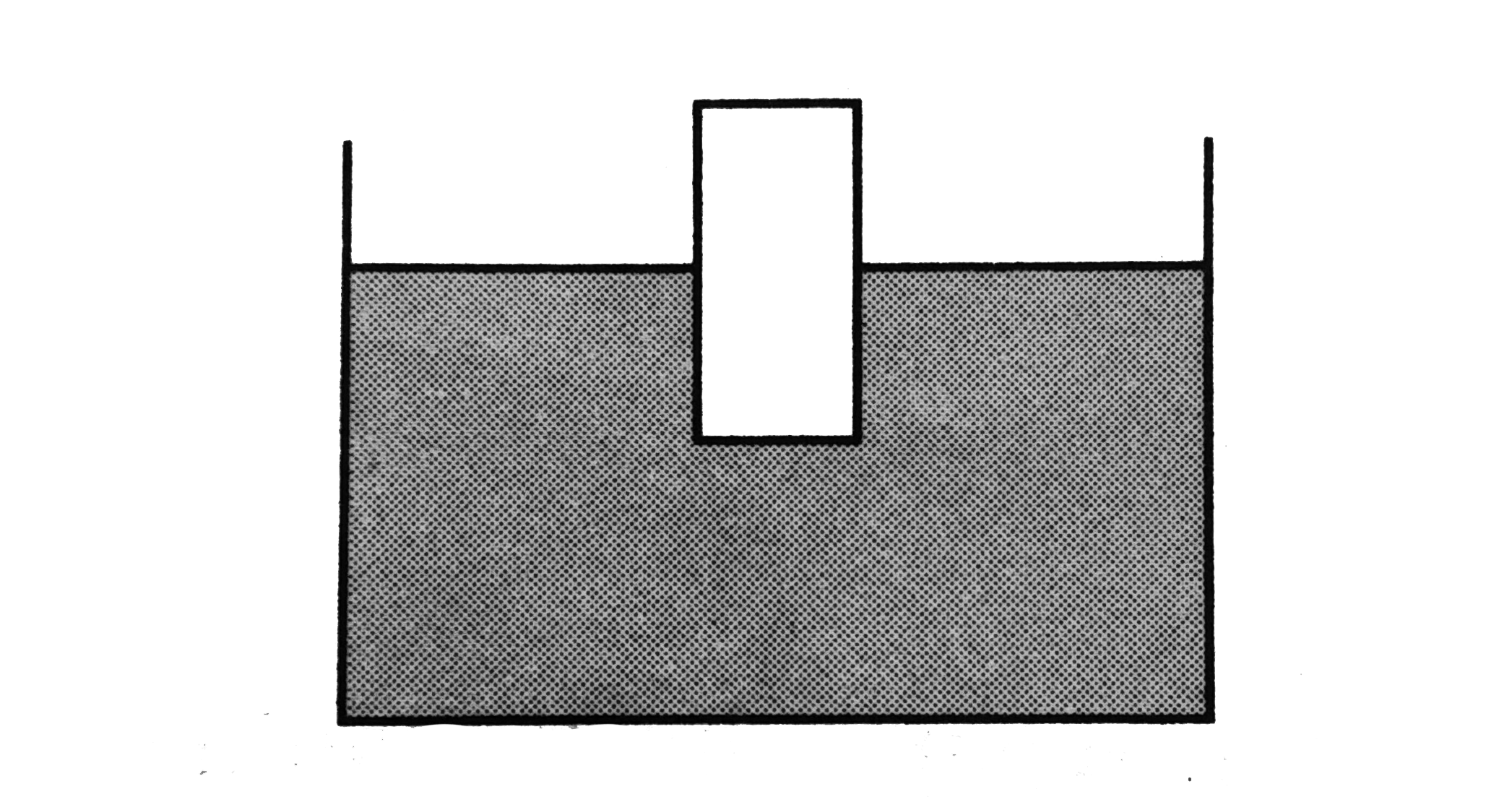An object is floating in a liquid , kept in a container . The container is placed in a lift . Choose the correct option .
Buoyant force increases as the lift accelerates up
Buoyant force decreases as the lift accelerates up
Buoyant force remains constant as the lift accelerates
The fraction of solid submerged into liquid decreases
The correct Answer is:A
To solve the problem of an object floating in a liquid inside a container placed in a lift, we need to analyze the effects of the lift's acceleration on the buoyant force acting on the object. Here’s a step-by-step breakdown:
Step 1: Understanding the Scenario
- An object is floating in a liquid inside a container.
- The container is placed in a lift (elevator), which can accelerate either upwards or downwards.
Step 2: Buoyant Force Concept
- The buoyant force (B) acting on the object is given by Archimedes' principle:
B=V⋅ρ⋅g
where V is the volume of the liquid displaced by the object, ρ is the density of the liquid, and g is the acceleration due to gravity.
Step 3: Effective Gravity in the Lift
- When the lift accelerates upwards with acceleration A, the effective acceleration due to gravity (geffective) becomes:
geffective=g+A
- Conversely, if the lift accelerates downwards, the effective gravity becomes:
geffective=g−A
Step 4: Effect of Lift Acceleration on Buoyant Force
- If the lift accelerates upwards:
- The buoyant force increases because geffective increases.
- Thus, the buoyant force acting on the object becomes:
B=V⋅ρ⋅(g+A)
- If the lift accelerates downwards:
- The buoyant force decreases because geffective decreases.
- The buoyant force acting on the object becomes:
B=V⋅ρ⋅(g−A)
Step 5: Floating Condition
- For the object to float, the buoyant force must equal the weight of the object:
B=mg
- As the lift accelerates, the buoyant force changes, but the object will still float as long as the buoyant force equals the weight of the object.
Step 6: Conclusion
- The buoyant force will increase as the lift accelerates upwards and decrease as it accelerates downwards. However, the fraction of the object submerged does not change because it depends on the density of the liquid and not on the effective gravity.
Final Answer
- The correct option is that the buoyant force increases as the lift accelerates upwards.
- An object is floating in a liquid inside a container.
- The container is placed in a lift (elevator), which can accelerate either upwards or downwards.
- The buoyant force (B) acting on the object is given by Archimedes' principle:
B=V⋅ρ⋅g
where V is the volume of the liquid displaced by the object, ρ is the density of the liquid, and g is the acceleration due to gravity.
- When the lift accelerates upwards with acceleration A, the effective acceleration due to gravity (geffective) becomes:
geffective=g+A
- Conversely, if the lift accelerates downwards, the effective gravity becomes:
geffective=g−A
- If the lift accelerates upwards:
- The buoyant force increases because geffective increases.
- Thus, the buoyant force acting on the object becomes:
B=V⋅ρ⋅(g+A)
- If the lift accelerates downwards:
- The buoyant force decreases because geffective decreases.
- The buoyant force acting on the object becomes:
B=V⋅ρ⋅(g−A)
- For the object to float, the buoyant force must equal the weight of the object:
B=mg
- As the lift accelerates, the buoyant force changes, but the object will still float as long as the buoyant force equals the weight of the object.
- The buoyant force will increase as the lift accelerates upwards and decrease as it accelerates downwards. However, the fraction of the object submerged does not change because it depends on the density of the liquid and not on the effective gravity.
- The correct option is that the buoyant force increases as the lift accelerates upwards.
Topper's Solved these Questions
Similar Questions
Knowledge Check
The liquid inside the container has density ρ. Choose the correct option.
 ApA−pC=2ρgLBpC−pB=√2ρgLCpC−pD=ρgLDpA−pD=0ρgL
ApA−pC=2ρgLBpC−pB=√2ρgLCpC−pD=ρgLDpA−pD=0ρgLA plank is floating in a liquid as shown, Fraction f of its volume is immersed. Choose the correct options
 AIf the system is taken to a place where atmospheric pressure is more. F will increaseBIn above condition f will remain unchangedCIf temperature is increasesd and expansion of only liquid is considered f will increasesDIf temperature is increased and expansion of only plank is considered f will decrease
AIf the system is taken to a place where atmospheric pressure is more. F will increaseBIn above condition f will remain unchangedCIf temperature is increasesd and expansion of only liquid is considered f will increasesDIf temperature is increased and expansion of only plank is considered f will decreaseA cylinder is floating in two liquids as shown in figure. Choose the correct options.
 ANet force on cylinder by liquid 1 is zeroBNet force on cylinder by liquid 1 is non-zeroCNet force on cylinder by liquid 2 is equal to the upthrustDNet force on cylinder by liquid 2 is more then the upthrust
ANet force on cylinder by liquid 1 is zeroBNet force on cylinder by liquid 1 is non-zeroCNet force on cylinder by liquid 2 is equal to the upthrustDNet force on cylinder by liquid 2 is more then the upthrust
A plank is floating in a non-viscous liquid as shown, Choose the correct option

View SolutionA cube of ice is floating in a liquid of relative density 1.25 contained in a beaker . When the ice melts, the level of the liquid in the beaker ?
View SolutionA liquid is kept in a glass container. If the force of adhesion is greater than the force of cohension , then
View SolutionA charge Q is placed at the centre of a spherical conducting shell. Choose the correct option.
View SolutionWhether an object will float or sink in a liquid, depends on
View Solution
